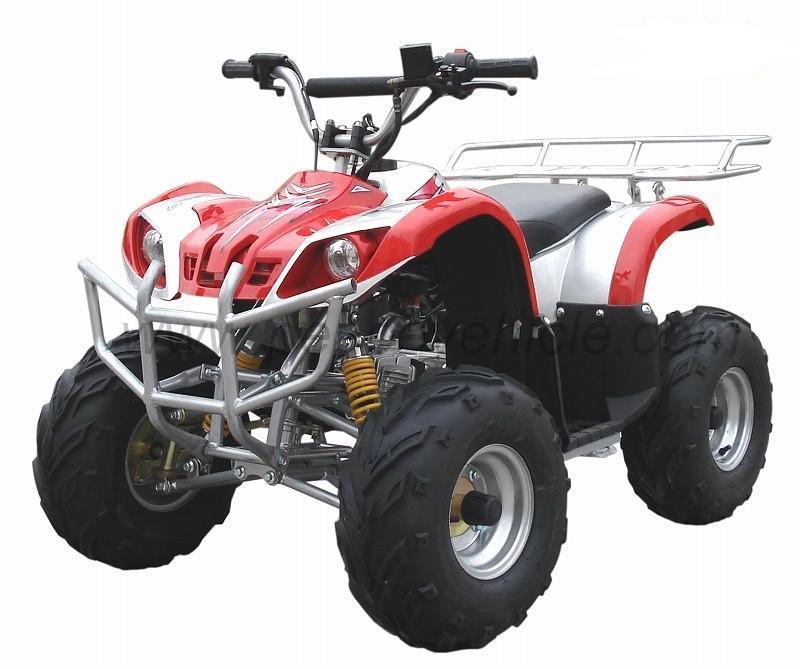VMC Chinese Parts $ 19.74
VMC Chinese Parts $ 6.49
VMC Chinese Parts $ 9.84
VMC Chinese Parts $ 5.75
VMC Chinese Parts $ 6.55
Sold Out
VMC Chinese Parts $ 6. 50
VMC Chinese Parts $ 57.95
VMC Chinese Parts $ 34.95
VMC Chinese Parts $ 9.95
VMC Chinese Parts $ 7.70
VMC Chinese Parts $ 21.95
VMC Chinese Parts $ 5.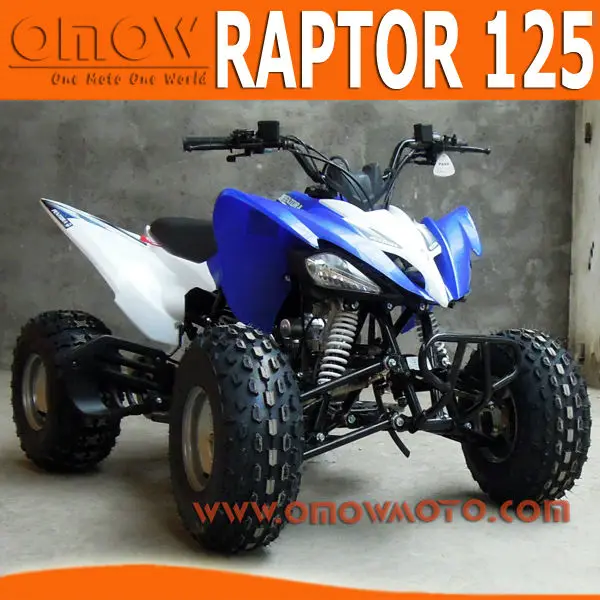 49
49
VMC Chinese Parts $ 5.49
VMC Chinese Parts $ 4.35
VMC Chinese Parts $ 13.15
VMC Chinese Parts $ 13.15
Parts Unlimited $ 34.95
Parts Unlimited $ 15.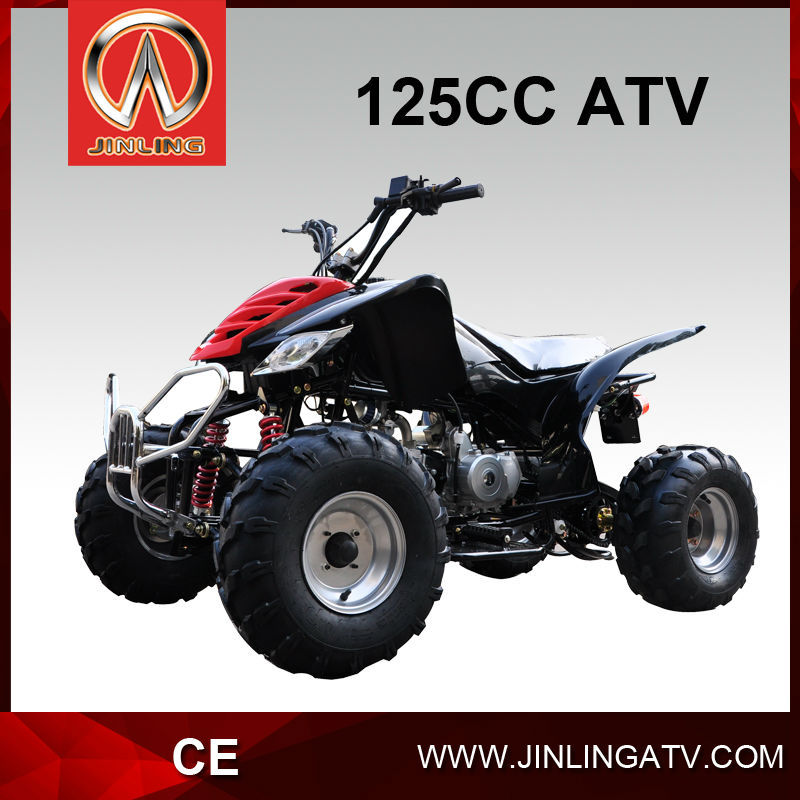 95
95
Sold Out
Parts Unlimited $ 15.95
Sold Out
Parts Unlimited $ 29.95
Sold Out
Parts Unlimited $ 34.95
Parts Unlimited $ 29.95
Parts Unlimited $ 29.95
Sold Out
VMC Chinese Parts $ 10.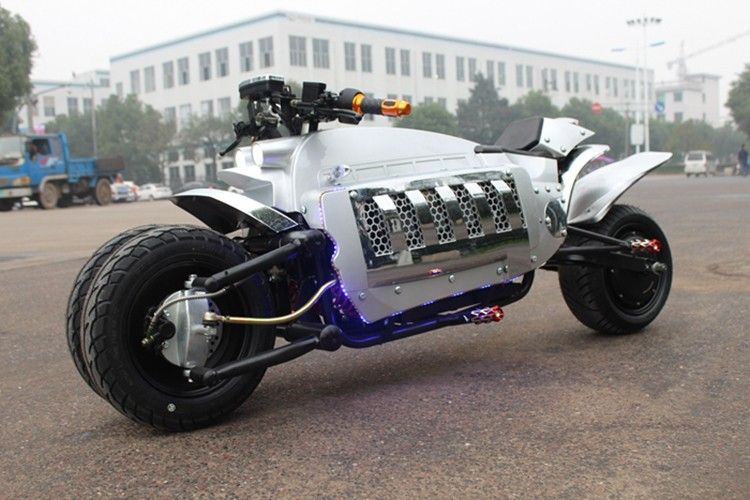 94
94
VMC Chinese Parts $ 42.85
VMC Chinese Parts $ 10.94
VMC Chinese Parts $ 8.80
VMC Chinese Parts $ 7.65
VMC Chinese Parts $ 16.45
VMC Chinese Parts $ 9.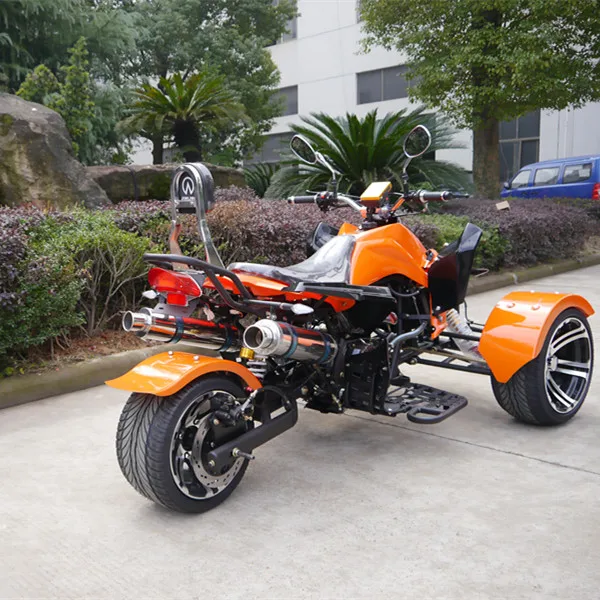 84
84
VMC Chinese Parts $ 41.75
A day out with your ATV is a ton of fun until the engine overheats. Knowing the common ATV overheating symptoms is the first step in dealing with this issue, and ideally, finding a fix. Being aware of ATV overheating symptoms is also critical in ensuring that you stop riding right away to avoid major engine damage.
The clearest indicator of an ATV overheating is a warning light (if you have an instrument cluster with an overheat warning). Of course, not all ATV overheating symptoms are this clear to understand. You may notice power loss, or fluids, such as oil, dripping or leaking. You might feel the engine heating up, with a case that is hotter than usual.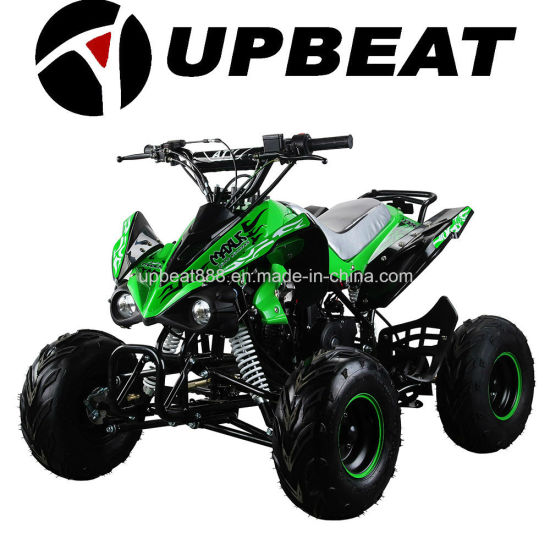 Pay attention to a sweet scent, which is the coolant burning, and look out for steam. You might also notice a ticking noise in the engine if you listen closely enough. That is oil burning off as the engine heats.
Pay attention to a sweet scent, which is the coolant burning, and look out for steam. You might also notice a ticking noise in the engine if you listen closely enough. That is oil burning off as the engine heats.
The first sign will likely be that burning coolant smell. Around this time, steam may be coming from the radiator. If you notice this or any other ATV overheating symptom, try to stop safely, especially if you’re at the point of a ticking engine. If you ride longer, the piston will expand and seize.
An ATV might overheat and display the symptoms above for many reasons. First, check the radiator. ATVs often tackle a lot of dirt and mud, which might wash off the exterior of your machine while still clogging the rad. Cleaning the radiator removes dirt and clogs and ensures fluids remain cool.
You should check the coolant or radiator fluid while you are there. A simple coolant tester goes a long way. It may be the wrong type or mix, too old, or too low.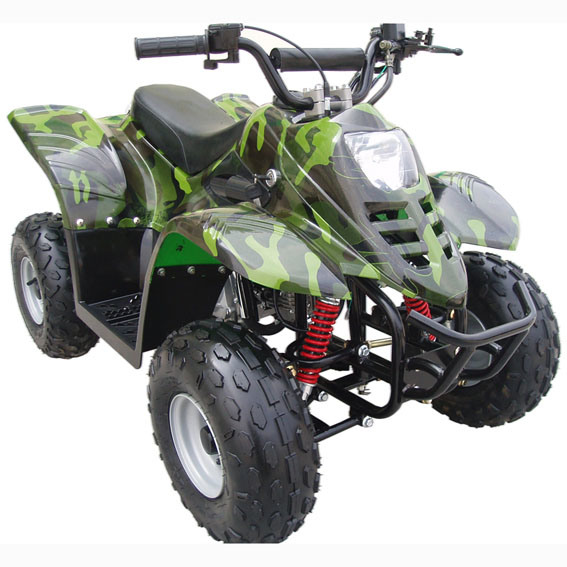 Other parts of the radiator to check include the fan, to make sure it’s running, and the hose. Also check the cap to ensure that it and the gasket are creating a strong seal. If the thermostat in the cooling system is faulty, your engine can overheat too.
Other parts of the radiator to check include the fan, to make sure it’s running, and the hose. Also check the cap to ensure that it and the gasket are creating a strong seal. If the thermostat in the cooling system is faulty, your engine can overheat too.
Monitor the ATV’s water pump or impeller. These often leak or ultimately fail thanks to bearing issues. You should also consider your ATV engine tuning, ensuring it is done properly to avoid excess heat.
Is your ATV air-cooled? If so, moving air is an important element that does not work well during prolonged idling. If you are riding an air-cooled ATV, be sure to shut the machine down if you are stopping for a longer period.
Finally, no matter what type of ATV you drive, hot weather could be the problem. Your ATV may have a hard time operating well in the heat, especially with a heavy load. Even if there is nothing wrong with the machine, hot climates can overwhelm the cooling system, so you may want to sit out the ride.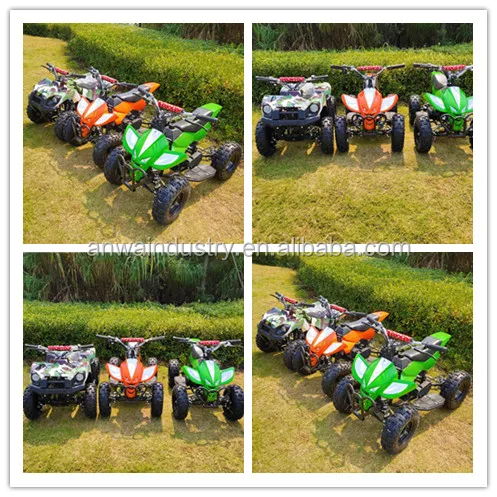
As with many ATV issues, a bit of work in the present can prevent issues later on. One key aspect of avoiding ATV overheating is making sure the radiator is always as clean as possible. Remove the detachable screen and wash it with a hose or pressure washer. Then use a hose to clean the radiator fins. Be careful here, as the fins have to stay in the same shape to work well and cool the machine.
Similarly, regularly maintain the coolant as part of your schedule. Use that handy coolant tester. Your ATV manufacturer should provide recommendations on how often to flush and change the coolant. Between those complete changes, check and test the fluid at least every few months.
You can add a few aftermarket items to improve your ATV’s cooling abilities, such as an electric radiator fan. An aftermarket water pump and impeller can improve capacity. A high-pressure radiator cap can help keep your engine cool even if you’re low on coolant.
For issues like that of a faulty thermostat, you can try tests at home. Hang it in a pan of heating water and watch to ensure the thermostat opens fully at 10 to 15 degrees above its rated temperature.
As with most ATV issues and their fixes, if you find the DIY approach is not solving your overheating problem, it’s time to talk to a pro. An experienced ATV mechanic can help you determine why your machine is overheating and how you can prevent that problem going forward. A seized piston means your ATV is broken far beyond any kind of DIY fix, so attempt to deal with it long before you get to that point.
Disclaimer: While we endeavor to keep the information on our blog up to date and correct, Maxtrade (Coolster) makes no representations or warranties of any kind, express or implied about the completeness, accuracy, reliability, suitability, or availability with respect to the website or the information, products, services, or related graphics contained on the website for any purpose.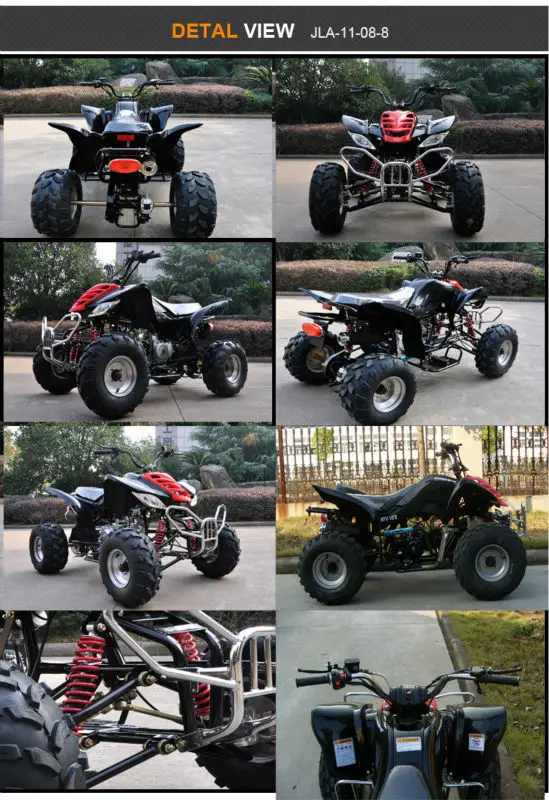 Any reliance you place on such material is therefore strictly at your own risk.
Any reliance you place on such material is therefore strictly at your own risk.
1. The sport ATVs are powerful and fast, with high dynamic properties and improved handling characteristics. However, there are no illusions - sports ATVs are not particularly located for the harsh Russian off-road - their ground clearance and cross-country ability are lower than those of "utilitarians" and tourist ATVs.
2. Touring ATVs With these “quads” you can conquer the impassable road and handle the tightest turns, while maintaining control, comfort and safety.
All-wheel drive, with a reduction gear, thanks to low-pressure wheels, they can freely ride on sand and snow slush, and due to the lower mass of the car than the “utilitarians”, they pick up speed faster. Tourist ATVs are made, sorry for the tautology, “for a tourist”: a roomy trunk, comfortable seats for the driver and passenger, a car steering wheel.
3. Utility Utility vehicles are often used as workhorses of the widest range: agricultural work, cargo transportation or snow removal, a tractor for cars, fishing and hunting trips.
Utility Utility vehicles are often used as workhorses of the widest range: agricultural work, cargo transportation or snow removal, a tractor for cars, fishing and hunting trips.
These versatile ATVs can climb the steepest hills, ride off-road and rough terrain with ease. In addition, in ATVs of this type, you can replace the wheels with caterpillar tracks and attach a winch, which will expand the list of tasks of a utility ATV even more (at least even transport large loads). Utilitarians are distinguished by their greater weight compared to other types of ATVs (up to 400 kg), increased engine power, all-wheel drive and high cross-country ability.
Before you buy, it's important to decide what your ATV is for - and choose your type depending on the purpose of the ATV.
A hunter's or angler's ATV must have high ground clearance, high tread wheels and a winch. 4WD drive is optional.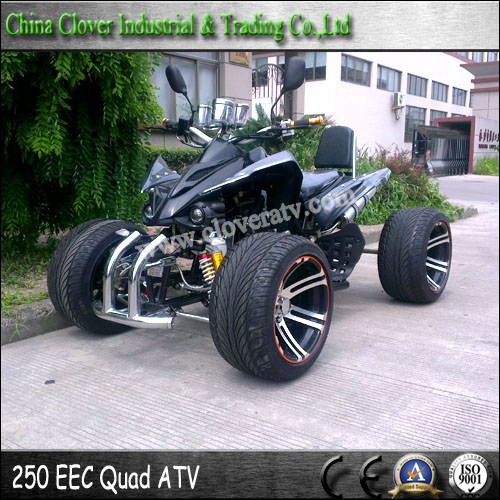 You can choose among the “utilitarians”, although for long trips to nature, tourist ones are also suitable, and for some cases, some sports ones. When choosing which ATV is best suited for hunting and fishing, you need to clearly understand the type and complexity of obstacles that you may encounter on the ground, hunters also need to be aware of the weight and size of the game (yes, a wild boar can not be mounted on every quadra). As for additional accessories, protection of the driver from dirt and the possibility of additional equipment of the ATV with a caterpillar drive will not interfere. If the good old huntsman Kuzmich from "Peculiarities of National Hunting / Fishing" had a worthy all-terrain vehicle, the number of tales told to the general would be significantly reduced.
You can choose among the “utilitarians”, although for long trips to nature, tourist ones are also suitable, and for some cases, some sports ones. When choosing which ATV is best suited for hunting and fishing, you need to clearly understand the type and complexity of obstacles that you may encounter on the ground, hunters also need to be aware of the weight and size of the game (yes, a wild boar can not be mounted on every quadra). As for additional accessories, protection of the driver from dirt and the possibility of additional equipment of the ATV with a caterpillar drive will not interfere. If the good old huntsman Kuzmich from "Peculiarities of National Hunting / Fishing" had a worthy all-terrain vehicle, the number of tales told to the general would be significantly reduced.
If you are a pro, the choice is obvious - exclusively sports models. But for fans from time to time to ride with the breeze, many manufacturers produce utility ATVs, some of them are based on the engines of sports "quads".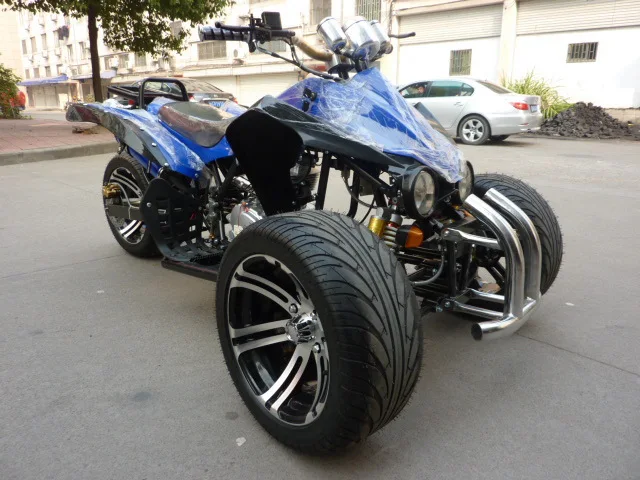
Such an ATV is the best assistant at any household work - even at a construction site, even in the country. Among the "utilitarians" you can always choose the right one. The main thing is to have a winch and a towbar. The engine capacity for such a "workhorse" is 500 cubic meters. cm, however, if you plan to transport very large loads, it is better to choose a larger volume - 700-800 cubic meters. see
There is a wide selection of both utility and touring ATVs. The decisive factor in this case is one - this is the type of terrain. For a mountain bike, a tourist ATV is better, for everyone else - a utilitarian one. If you decide to climb into the most impassable wilderness, a winch will not be superfluous (well, and a map at the same time, but they are not included with ATVs).
Let's compare a couple of models that are worthy of "becoming your first". ATVs. So that everything is “on garlic” - they analyzed both the domestic and foreign segments.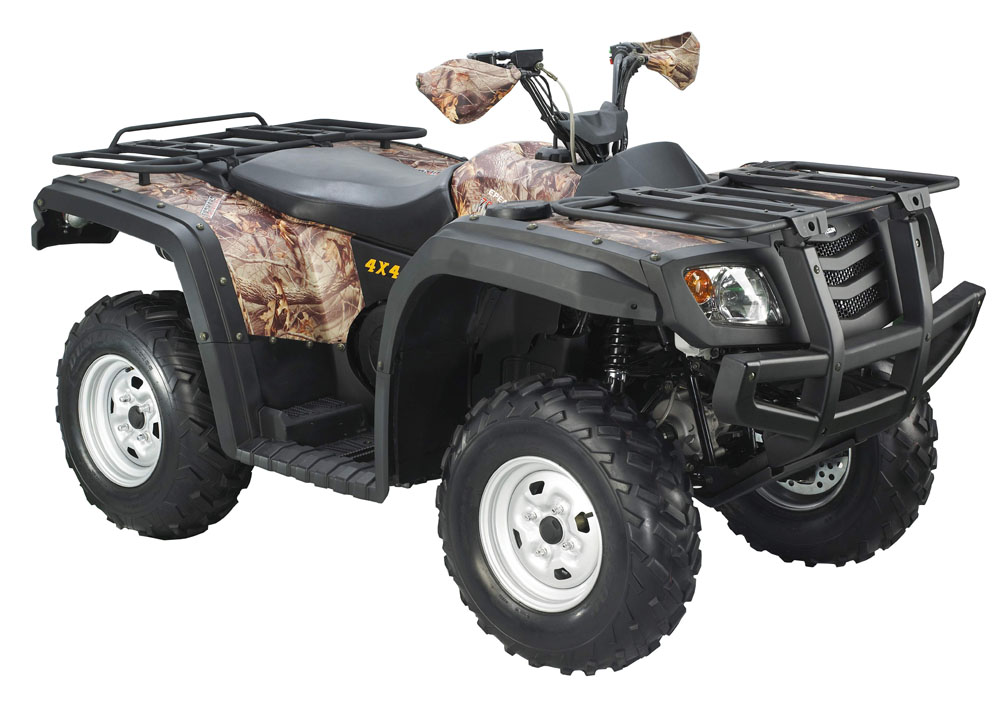
Among domestic and more budgetary , we advise you to pay attention to the quadra from Russian Mechanics and Stels.
| Model | STELS ATV 600 YL LEOPARD | RM 650-2 |
|---|---|---|
| Manufacturer | Russia | Russia |
| Color | Available in black, yellow, blue, carbon and camo | Available in white, black, yellow, red and camouflage |
| Dimensions | 2250 x 1210 x 1225 mm | 2320 x 1245 x 1255 mm |
| Wheelbase | 1465 mm | 1490 mm |
| Seats | Driver + Passenger | Driver + Passenger |
| Engine | 594cc, 4-stroke, carburetor, liquid-cooled, 39hp | 622 cc, 4-stroke, carburetor, air-cooled, 42. |
| Fuel | AI 92 | AI 92 |
| Fuel consumption | 12-14 l/100 km, with all-wheel drive and difficult terrain up to 20 l/100 km | 12-14 l/100 km, 4WD and difficult terrain up to 20 l/100 km |
| Drive | 2WD 4WD/ + electric differential lock | 2WD/4WD + electric differential lock |
| Transmission | Mechanical with variator | Mechanical with variator |
| Curb weight | 376 kg | 375 kg |
| Gross weight | 656 kg | n/a |
| Front suspension | Independent, double wishbone, with spring-hydraulic shock absorbers, 155 mm | Independent, double wishbone, transverse with hydraulic shock absorbers, 170 mm |
| Rear suspension | Independent, double wishbone, with spring-hydraulic shock absorbers, 165 mm | Independent double wishbone with hydraulic shock absorbers, 195 mm |
| Design speed | 90 km/h | 85 km/h |
| Clearance | 290 mm - for ATV on AT26 rubber. | 290 mm - minimum |
| Equipment | Front luggage rack, rear luggage rack, winch 4.5Lb metal or synthetic cable, passenger seat, plastic underbody protection, square tow bar | Electric winch, alloy wheels, rear-view mirrors, impact-resistant plastic, fender flares, complete lighting kit, basic underbody protection, tow bar |
Both ATVs are "utility" and, as you can see, their characteristics are similar. But both of them have a couple of their own chips.
The STELS ATV 600 is equipped with the Italian dashboard Koso (a well-known manufacturer of electronics for all types of motorcycle equipment). It gives a perfectly readable image in various temperature conditions. For an ATV, operated all year round, just right. Reinforced brake hoses are used to increase the reliability of the brake system. For the same purpose, the "quad" is equipped with waterproof electrical wiring. All relays and fuses are placed in a moisture and dustproof box. The Stels ATV600 is inspired by the world famous Yamaha Grizzly ATV. Well, traveling on this ATV is quite comfortable together - not necessarily with an extreme comrade, you can also with your beloved woman. They know how to decorate an ATV - at least with their enthusiastic squeals.
All relays and fuses are placed in a moisture and dustproof box. The Stels ATV600 is inspired by the world famous Yamaha Grizzly ATV. Well, traveling on this ATV is quite comfortable together - not necessarily with an extreme comrade, you can also with your beloved woman. They know how to decorate an ATV - at least with their enthusiastic squeals.
PM 650-2 is also a double, tandem model. She has a two-level seat, so the passenger or passenger will see not only the back of the driver's head, but also get a good overview of the area. This snow and swamp vehicle has front and rear luggage platforms (carrying capacity - 40 and 80 kg) and two glove boxes (volume - 5 and 16 liters). It has improved footrests to keep them from slipping off the footpegs. Even up to your ears in water or mud, you will be able to comfortably overcome wetland obstacles, and not get stuck in them. In short, this summer you can safely take the unit, the second half, a tent, a bowler hat and go on vacation to Altai (do not forget about the tourist tax).
Popular and reliable brands among foreigners are Polaris and BRP.
| Model | POLARIS SPORTSMAN TOURING 570 | OUTLANDER MAX 450 |
|---|---|---|
| Manufacturer | US | Canada |
| Dimensions | 2184 x 1219 x 1219 | 2310 x 1168 x 1330 |
| Wheelbase | 1422 mm | 1499 mm |
| Seats | Driver + Passenger | Driver + Passenger |
| Engine | 567cc, 4-stroke, electronic injector, liquid cooled, 44 HP | 427cc, 4-stroke, electronic injector, liquid cooled, 38L/s |
| Fuel | AI92 | AI92 |
| Fuel tank capacity | 17 l | 20. |
| Fuel consumption | 10-12L/100km/15-20L off-road with AWD | 10-12 liters per 100 km / up to 20 liters off-road with all-wheel drive |
| Drive | AWD/2WD | Full + front differential lock |
| Transmission | Automatic | Variator |
| Curb weight | 340 kg | 324 kg |
| Front suspension | Independent, on rails, 208 mm | Double A-arms, 229mm |
| Rear suspension | IRS double wishbone independent, 240mm | Trailing arm independent torsion bar rear suspension (TTI) 224 mm |
| Design speed | 100 km/h | 100 km/h |
| Clearance | 279 mm - minimum | 267 - minimum |
| Equipment | Digital Gauges, Speedometer, Odometer, Tachometer, Dual Odometers, Hourmeter, Clock, Diagnostic Lights, Gear Indicator, Fuel Level, Low/High Beam Indicator, DC Outlet, Tow Bar, Lock&Ride Accessory Mounting System | Multi-Function Digital Gauge, 163. |
The Sportsman Touring 570 is the industry's fastest all-wheel drive, so the manufacturer promises to conquer any corners and hills without problems. This "quad" claims to be completely universal: any track - alone or with a passenger, any difficult job done quickly and easily. It has the largest load capacity - 261 kg - and traction force - up to 555 kg, as well as the largest storage compartments of 24.6 liters, an integrated winch and snow plow attachment system. And do not forget about the excellent vinyl seats for all-weather use: the “fifth point” to sit out is no option.
BRP Outlander MAX 450 is the youngest representative in the Outlander lineup. "Sharpened" for outdoor activities, housework and off-road travel. Speaking of utilitarian ATV capabilities, the 2019 BRP Outlander 450 is capable of towing loads up to 590kg. The front cargo area has a load capacity of 54 kg, and the rear can accommodate up to 109 kg of cargo.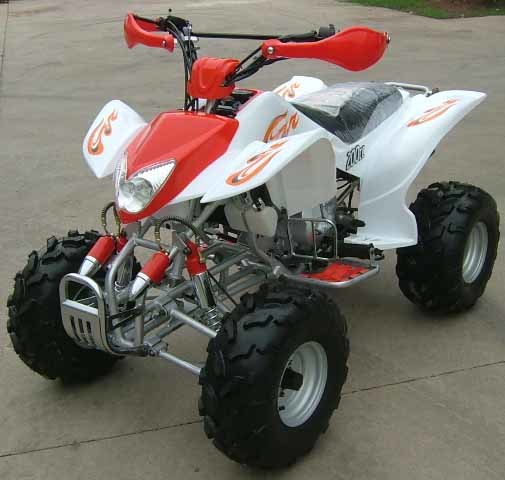 The "chip" of this model is the frame design, which provides excellent handling and stability while driving through difficult areas.
The "chip" of this model is the frame design, which provides excellent handling and stability while driving through difficult areas.
For those who still find it difficult to decide on the model themselves.
Active Rest retail chain will help you choose your first ATV.
Ready to choose? And we are ready to help you with this.
And for those who have already chosen a model. Would you like to add a kangaroo? Or a gun case?
It's like choosing a sandwich at a restaurant and the "sandwich picker" asks if you want to add bacon? Or make double cheese? No, you can eat a sandwich without them, but it tastes better with them. “Tastier” - when the “quad” is equipped with “dopas”. No matter how unpretentious the ATV and its owner may be, life shows that one basic configuration is never enough. AT 9In 9% of cases, one or several accessories are purchased at once, which manufacturers do not initially include in the price, so as not to scare away buyers with an increased price tag.
Of course, you can buy an ATV without additional equipment, but such savings can hit the budget after the first off-road ride (the miser still pays twice - the elementary truth works here too). Accessories for all-terrain vehicles are very different, each brand has something of its own - protection of the bottom and levers from damage, a luggage box or wardrobe trunk - for active tourism and long trips out of town, a winch - to pull out a "quad" stuck in snow or mud .
Many owners of ATVs change the basic "rubber" and disks, install additional lighting and kengurins, buy a trailer for large loads. To increase the comfort of the driver and passengers: heated grips, a windshield, bags for the front platform, there are even gun cases for hunters.
Always wear proper protective clothing to prevent your ATV from ending up in a long stay in the hospital.
Each rider's equipment must include:
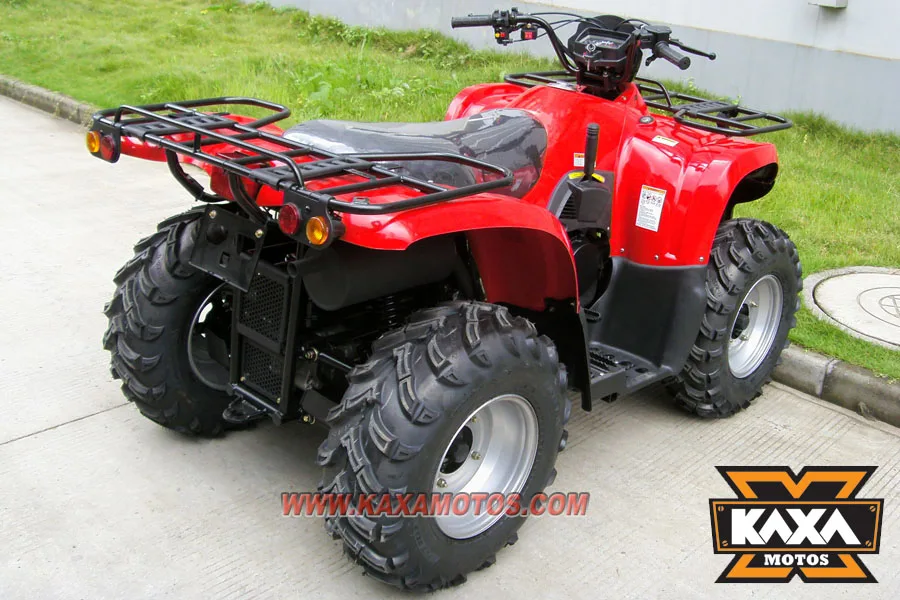 This is the most important piece of equipment. It will protect you from severe cranial injuries. It is best to use a motocross helmet that also protects the chin.
This is the most important piece of equipment. It will protect you from severe cranial injuries. It is best to use a motocross helmet that also protects the chin. Do not drive too fast. A four-wheel drive ATV is not a car or a motorcycle. It doesn't respond as well to the driver as a car, it can't lean quickly into a corner like a motorcycle. Remember that when riding an ATV it is very easy to roll over on level ground or even crash into a tree at full speed.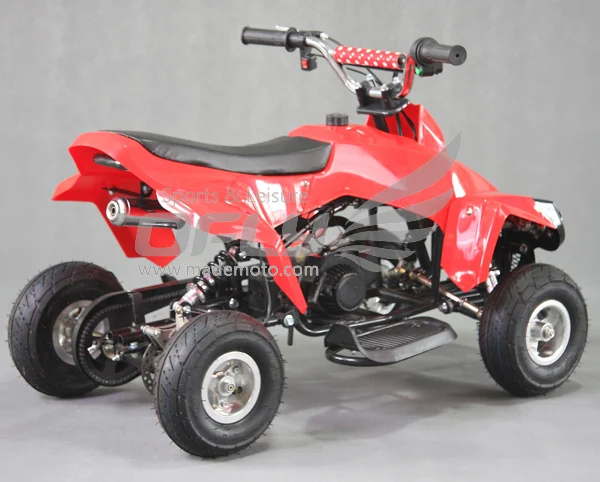 For example, if a stump comes across in a field under tall grass, the ATV can run into it, and then the rider will fly over the steering wheel, or at least hit it.
For example, if a stump comes across in a field under tall grass, the ATV can run into it, and then the rider will fly over the steering wheel, or at least hit it.
Never ride an ATV alone. It is best to ride with someone in a pair on two ATVs. There are a lot of situations when a partner is needed. For example, it is very difficult to put an overturned ATV on wheels, and if it covered you from above, then you won’t even be able to get out from under it alone. The second ATV can pull the first one out of the swamp or tow it to the camp in case of a breakdown.
When passing a difficult obstacle, it is better to get out of the saddle and, carefully working with the brake and accelerator, walk alongside. You should also not go too deep into the water - you can fill the motor.
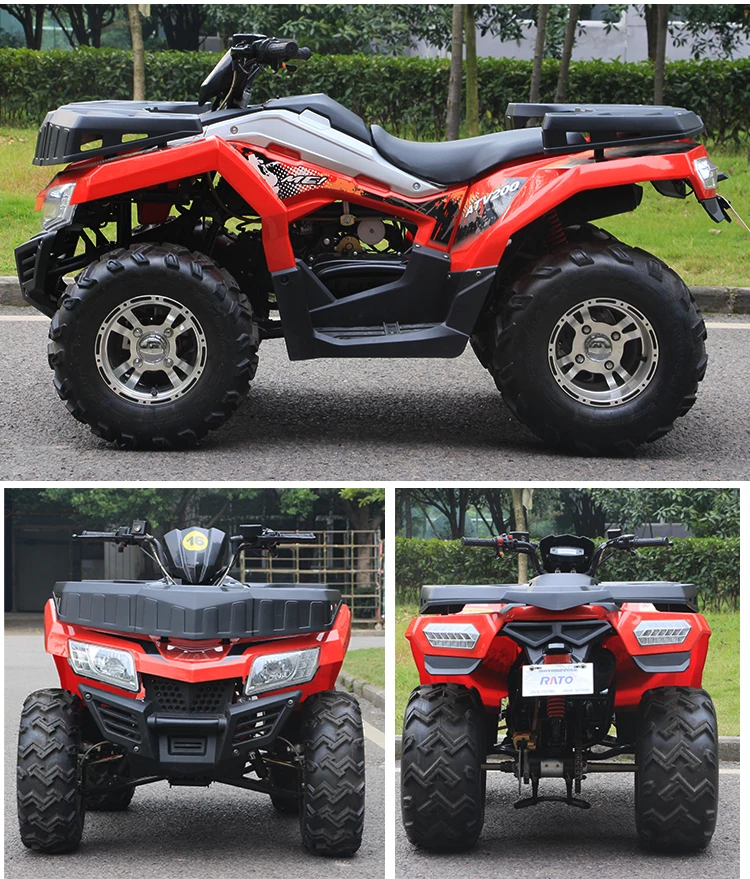
Turn the steering wheel in the desired direction. Tilt your upper body inward and rest your weight on the outside footboard. This will change the balance of traction between the wheels, and the turn will be made smoothly. Turns back are performed in the same way.
ATTENTION!!! ATVs are not designed to make sharp turns or turns at high speed!
If you have to drive on slippery surfaces, drive as carefully as possible and strictly observe the following rules:
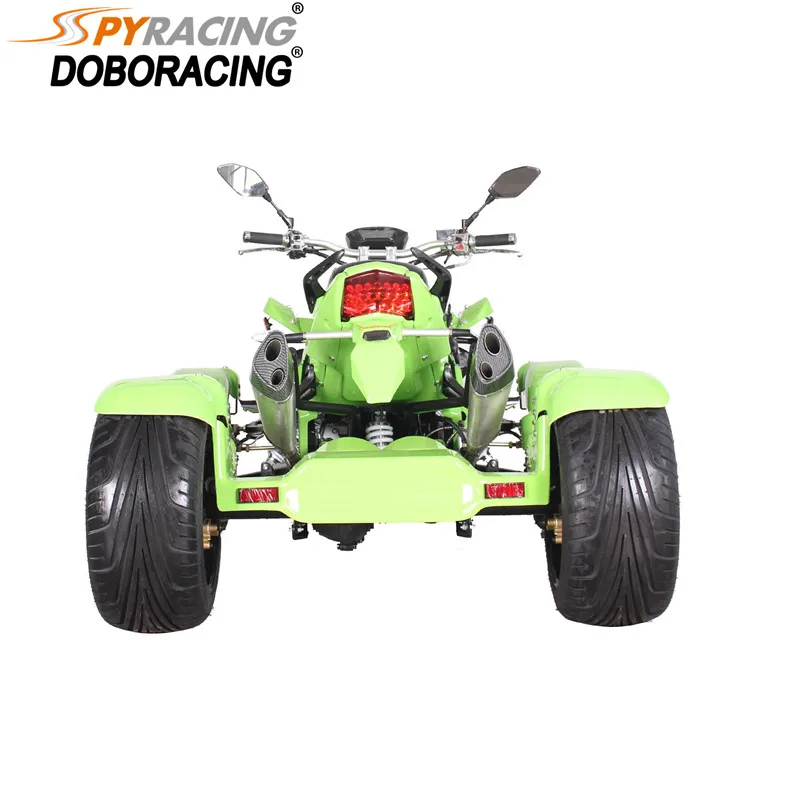

ATTENTION!!! Crossing hills on an ATV is very dangerous! If possible, try to avoid hills when riding an ATV. Any incorrect action while crossing a hill can cause serious injury, or even death!!!
If you still need to cross a hill with your ATV, follow these rules:
When descending a slope, you must:

If the machine stalls while climbing, do not let it roll down. Do the following:
The ATV can cross shallow water (the depth should not exceed the level of the footrests).